
ODROID-C5 is an affordable, power-efficient, high-performance Single Board Computer that supports Android and Linux platforms.
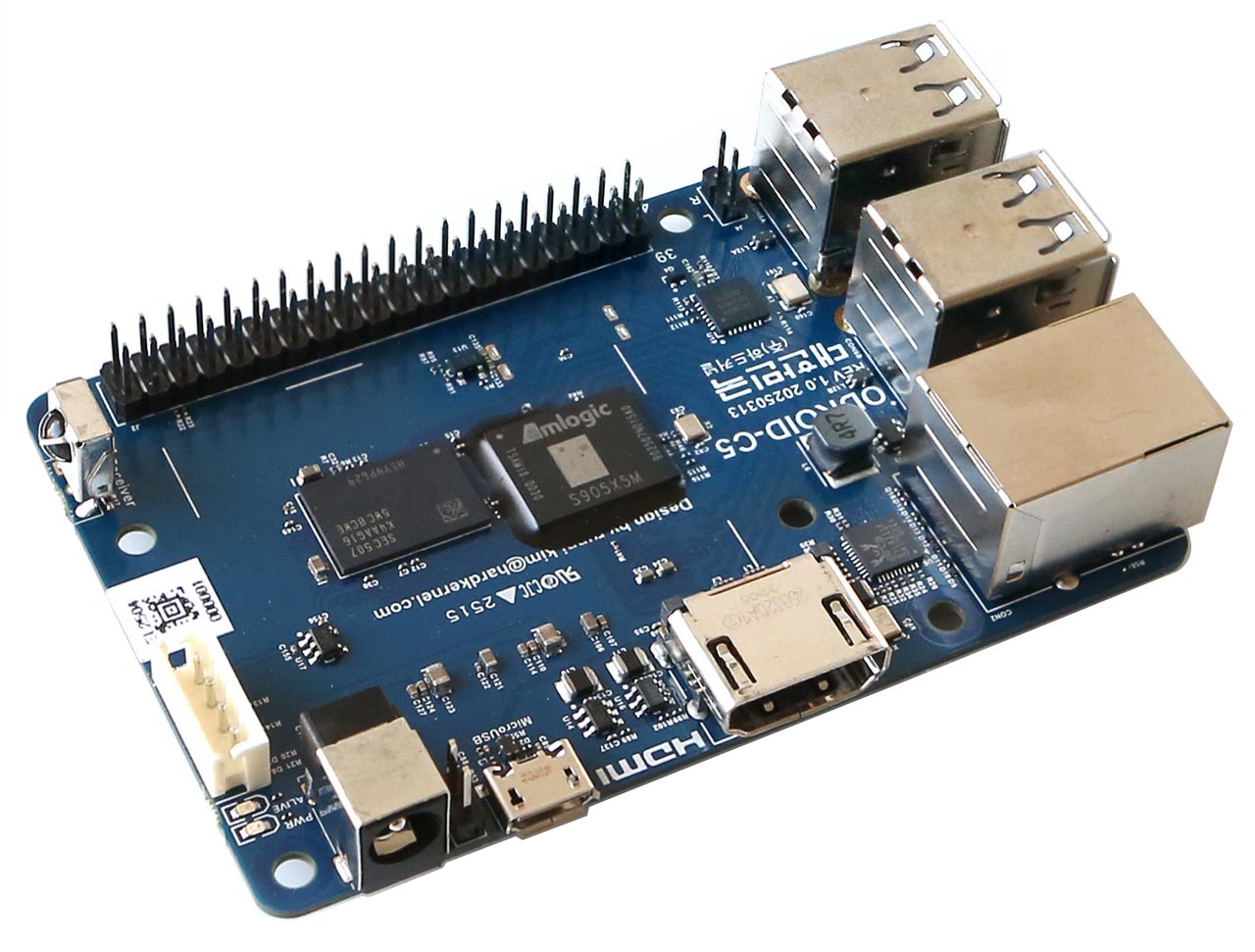
ODROID-C5 is powered by the Amlogic S905X5M application processor, manufactured in an advanced low-power semiconductor fab, featuring a quad-core Cortex-A55 CPU running at 2.5GHz and a modern Mali G310 GPU running at 0.85GHz.
Compare with the ODROID-C4 which had the previous generation processor S905X3, the computing performance of the ODROID-C5 is about 20-25% faster, the 4GB DRAM interface is significantly improved, the memory bandwidth increases by about 30%, and the new GPU 3D rendering performance is more than doubled.
The eMMC host interface specification also has been changed from HS200 to HS400, resulting in file system access speeds that are more than 50% faster.
Let’s take a look at the power and performance differences between ODROID-C4 and ODROID-C5 at a glance. Although these are somewhat synthetic benchmarks, it should help you estimate the performance differences.
- Power consumption in milliwatt (while running “stress-ng –cpu 4 –cpu-method matrixprod”)
- Drystone-2 (Integer performance)
- Double-Precision Whetstone (Floating-point performance)
- mbw (memory bandwidth)
- 7-Zip (Integer performance + memory bandwidth)
- iozone (eMMC storage performance)
- glmark2 (3D GPU performance)
Despite the noticeable performance increase, power consumption was reduced by over 25%, making it possible to build a very energy-friendly single board computer that consumes less than 2.5 watts even when the computing tasks are fully loaded.
| A CPU (Amlogic S905X5M) | H 2 x System LED indicators |
| B DDR4 memory (4GiB) | I 1 x UART for system console |
| C 4 x USB 2.0 host ports | J 1 x IR receiver |
| D 1 x RJ45 Ethernet port (10/100/1000) | K 40 x GPIO pins |
| E 1 x HDMI 2.0 | L, O Stereo audio output 2 pins, Alternative power input 2 pins |
| F 1 x Micro USB 2.0 port (OTG) | M 1 x eMMC module socket |
| G 1 x DC power jack (Outer diameter : 5.5mm, inner diameter : 2.1mm) | N 1 x Micro SD slot |
These outstanding low-power and low-heat characteristics make it the first SBC in our product line to be heatsink-free.
This reduces not only BOM costs but also operating electricity costs and carbon emissions.
As shown in the graph below, we performed a stress test for over two hours with the ODROID-C5 board mounted inside the case, and no thermal throttling issues occurred
The ODROID-C5 board dimensions and the locations of the connectors are identical to the ODROID-C4. Therefore, cases and most add-on boards for the C4 can be used as is.
The reason why the area around the CPU looks messy is because of the BGA underfill process.
BGA (Ball Grid Array) underfill is a post-assembly process where a low-viscosity, thermoset epoxy resin is dispensed under the BGA component to fill the gap between the BGA and the PCB. This process enhances the reliability and performance of the BGA solder joints by protecting them from stress and improving heat transfer.
Block Diagram
Hardware specifications
| Form Factor | Board Dimensions: 85mm x 56mm x 22mm Weight: 42g |
| Processor | Amlogic S905X5M Quad-Core Cortex-A55 (2.5GHz) ARM G310 V2 GPU (0.85GHz) |
| Memory | DDR4 4GB with 32-bit bus width Data rate: 3200 MT/s |
| Storage | 1x Micro SD slot (DS/HS mode up to UHS-I SDR104) 1x eMMC socket (HS400) |
| Networking | 1 x GbE port (RJ45, supports 10/100/1000 Mbps) – LED indicators * Green LED: Flashing by data traffics at 100Mbps connection * Amber LED: Flashing by data traffics at 1000Mbps connection |
| Video output | 1 x HDMI 2.0 (up to 4K@60Hz with HDR, CEC, EDID) |
| Audio | 1 x HDMI digital output 1 x Analog stereo line out |
| External I/O | 4 x USB 2.0 host port 1 x Micro USB port (OTG) 1 x Debug serial console (UART : 921600bps) 1 x 40 pin GPIO header GPIO input/output nominal voltage is 3.1V. The maximum input tolerance is 3.4V. |
| Other features | * System LED Indicators: – Red (POWER) Solid light when DC power is connected – Blue (ALIVE) Flashing like a heartbeat while Kernel runs. Solid on the u-boot stage. |
| Power | 1 x DC jack: outer (negative) diameter 5.5mm inner (positive) diameter 2.1mm 1 x Alternative(aux) power input from a 2-pin header
DC input voltage range: 7.5V ~ 15.5V (12V/2A power adapter is recommended) – IDLE : ≃ 1W without any kind of peripherals – CPU Stress : ≃ 2.5W (Performance governor) without any kind of peripherals – Power Off : ≃ 0.22W |
Software Demo Videos
Odroid C5 [120001]
- Brand: Hard Kernel
- Product Code: Odroid C5
- Availability: In Stock
-
47.20€
- Ex Tax: 47.20€
Available Options
Related Products
Odroid C5 + C4 Case [77504]
To protect the ODROID C5 board from dust and the elements, this fitted case is made for this exact p..
7.07€ Ex Tax: 7.07€

![Odroid C5 [120001] Odroid C5 [120001]](https://www.odroid.nl/image/cache/catalog/C5-Odroid/Pics/Hero-2-228x228.jpg)
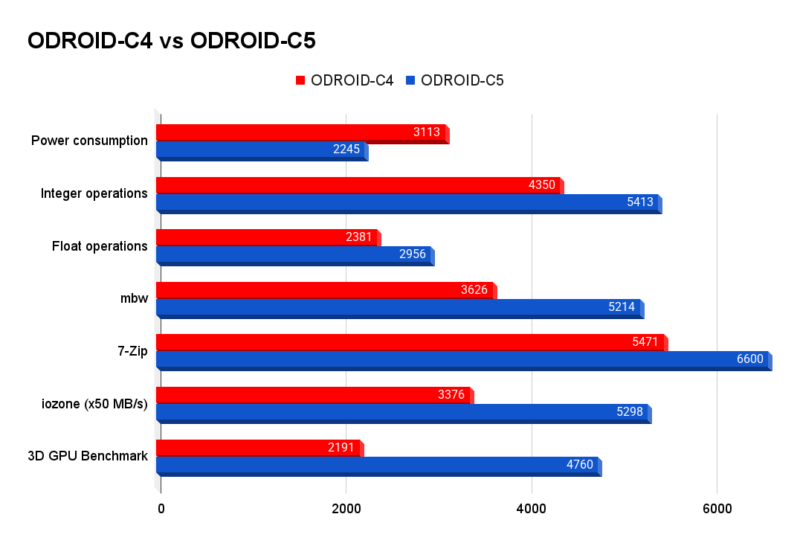

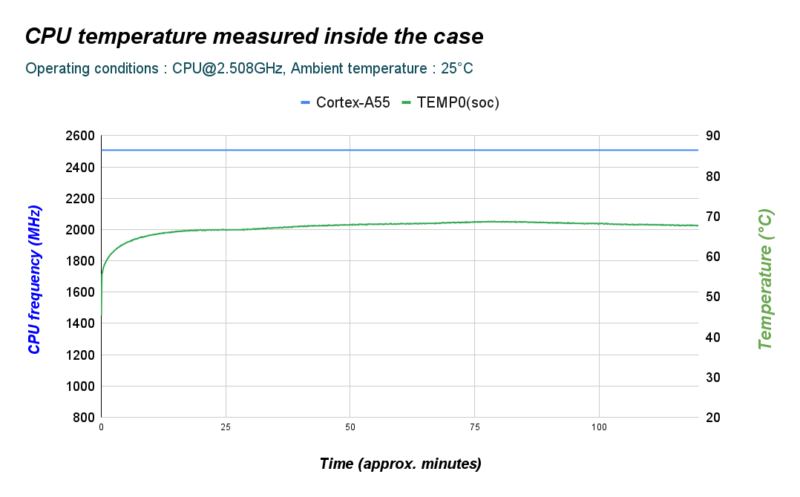
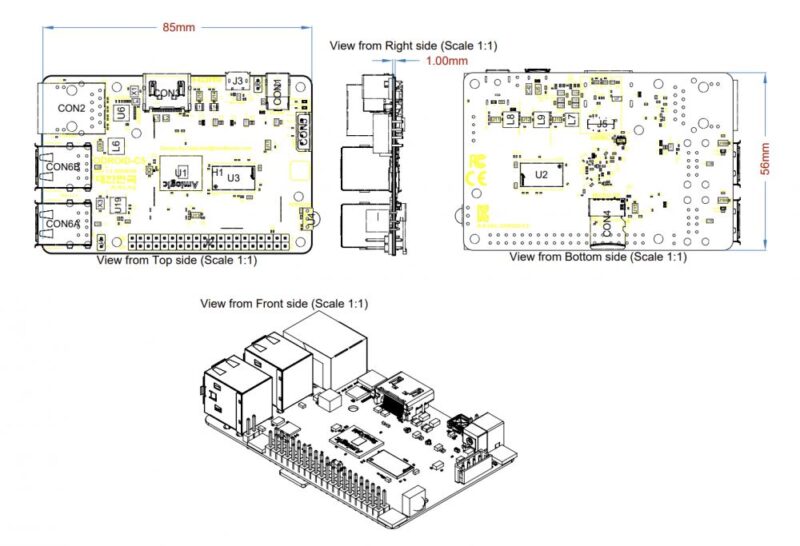
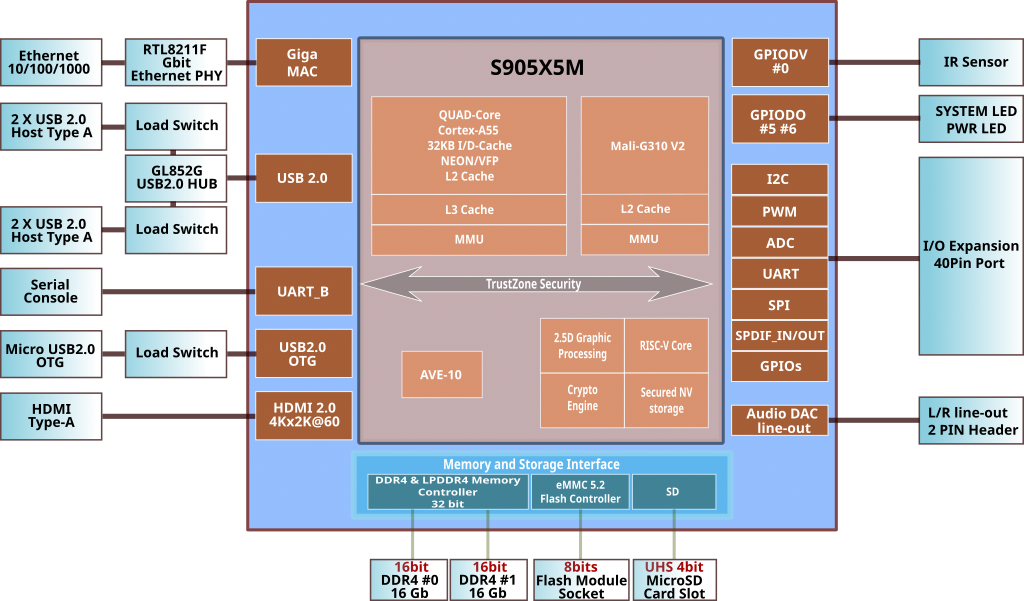
![Odroid C5 + C4 Case [77504] Odroid C5 + C4 Case [77504]](https://www.odroid.nl/image/cache/catalog/liymo/odroid/C4 4GB/odroidc4caseA-1-80x80.jpg)